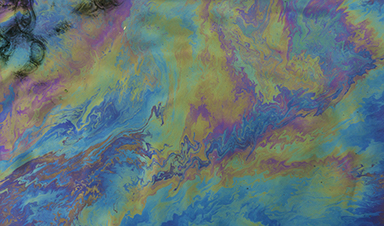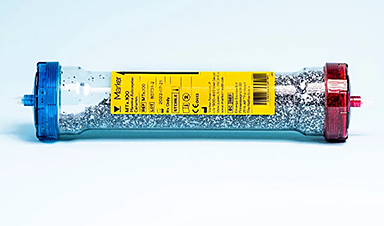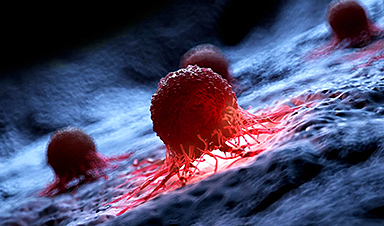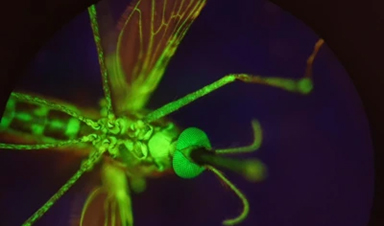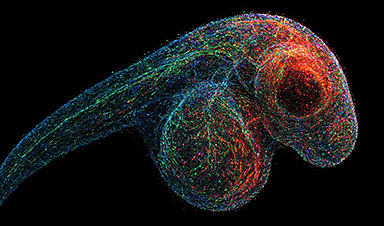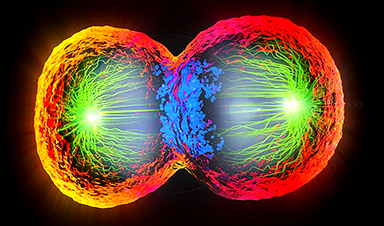| (Nanowerk News) Cleaning up after a major oil spill is a long, expensive process, and the damage to a coastal region’s ecosystem can be significant. This is especially true for the world’s Arctic region, where newly opened sea lanes will expose remote shorelines to increased risks due to an anticipated rise in sea traffic. | |
| Current mitigation techniques even in heavily populated regions face serious limitations, including low oil absorption capacity, potential toxicity to marine life and a slow remediation process. | |
| However, advances in nanotechnology may provide solutions that are more effective, safer and work much faster than current methods. That’s according to a new paper in Environmental Science: Nano (“Nanotechnology for oil spill response and cleanup in coastal regions”) by a Concordia-led team of researchers. | |
| “Using nanomaterials as a response method has emerged as a promising sustainable approach,” says lead author Huifang Bi, a PhD candidate in the Department of Building, Civil and Environmental Engineering at the Gina Cody School of Engineering and Computer Science. | |
| “This paper synthesizes, reviews and analyzes between 40 and 50 studies on the subject to give us a big-picture look of the status of nanotechnologies in coastal oil spill response. At the same time, we are also presenting our own suggestions and identifying research gaps between using nanomaterials in the lab and how they can be used in real-world applications.” | |
| She adds that nanomaterials are being widely studied to combat marine oil spills, but she is focusing specifically on coastline remediation. She estimates that more than 90 per cent of the papers she reviewed were exclusively lab-based and not yet available for field use. | |
Encouraging results need field testing |
|
| The unique properties found in nanomaterials can help mitigation across different remediation efforts. These include surface washing agents, dispersants, sorbents and bioremediation. Each method has its own strengths and drawbacks that can be improved with the use of nanomaterials. | |
| For instance, replacing synthetic surfactants and organic solvents with bio-based nanomaterials has shown to be both highly effective at removing oil and to produce less toxic substances that can harm coastal biotas. | |
| Nanomaterials can also be used in dispersants. Clay-based nanomaterials can stabilize oil particles in an emulsion, resulting in a larger area for oil-eating bacteria to grow and accelerating oil disappearance. In sorbents like aerogels or foams, nanomaterials can improve the removal of oil from water by absorption, adsorption or a combination thanks to large surface areas and a high number of sorption sites. | |
| Finally, they can also be used to accelerate bioremediation, a technique that uses microorganisms to break down harmful pollutants like oil into less harmful or harmless substances. | |
| “While these lab-based results are encouraging, we need to exercise caution,” warns Bi, winner of a 2023 Vanier Canada Graduate Scholarship. “We should prioritize the use of sustainable and eco-friendly nanomaterials to minimize environmental risks and ensure the responsible application of nanotechnology in coastal oil spill response. We also need to scale up testing to measure this efficacy in field tests.” | |
| According to Bi’s thesis supervisor Chunjiang An, an associate professor in the same department, the emergence of nanomaterials as oil spill remediation tools is coming at a critical time. | |
| “We are facing many new challenges, with threats of oil spills now affecting both traditional and new regions, including the Arctic,” he says. “We need to work with governments and the private sector to ensure that they are aware of these technologies and can further include them in their future remediation guidelines.” |
| Source: By Patrick Lejtenyi, Concordia University (Note: Content may be edited for style and length) |
News
How Everyday Plastics Quietly Turn Into DNA-Damaging Nanoparticles
The same unique structure that makes plastic so versatile also makes it susceptible to breaking down into harmful micro- and nanoscale particles. The world is saturated with trillions of microscopic and nanoscopic plastic particles, some smaller [...]
AI Outperforms Physicians in Real-World Urgent Care Decisions, Study Finds
The study, conducted at the virtual urgent care clinic Cedars-Sinai Connect in LA, compared recommendations given in about 500 visits of adult patients with relatively common symptoms – respiratory, urinary, eye, vaginal and dental. [...]
Challenging the Big Bang: A Multi-Singularity Origin for the Universe
In a study published in the journal Classical and Quantum Gravity, Dr. Richard Lieu, a physics professor at The University of Alabama in Huntsville (UAH), which is a part of The University of Alabama System, suggests that [...]
New drug restores vision by regenerating retinal nerves
Vision is one of the most crucial human senses, yet over 300 million people worldwide are at risk of vision loss due to various retinal diseases. While recent advancements in retinal disease treatments have [...]
Shingles vaccine cuts dementia risk by 20%, new study shows
A shingles shot may do more than prevent rash — it could help shield the aging brain from dementia, according to a landmark study using real-world data from the UK. A routine vaccine could [...]
AI Predicts Sudden Cardiac Arrest Days Before It Strikes
AI can now predict deadly heart arrhythmias up to two weeks in advance, potentially transforming cardiac care. Artificial intelligence could play a key role in preventing many cases of sudden cardiac death, according to [...]
NanoApps Medical is a Top 20 Feedspot Nanotech Blog
There is an ocean of Nanotechnology news published every day. Feedspot saves us a lot of time and we recommend it. We have been using it since 2018. Feedspot is a freemium online RSS [...]
This Startup Says It Can Clean Your Blood of Microplastics
This is a non-exhaustive list of places microplastics have been found: Mount Everest, the Mariana Trench, Antarctic snow, clouds, plankton, turtles, whales, cattle, birds, tap water, beer, salt, human placentas, semen, breast milk, feces, testicles, [...]
New Blood Test Detects Alzheimer’s and Tracks Its Progression With 92% Accuracy
The new test could help identify which patients are most likely to benefit from new Alzheimer’s drugs. A newly developed blood test for Alzheimer’s disease not only helps confirm the presence of the condition but also [...]
The CDC buried a measles forecast that stressed the need for vaccinations
This story was originally published on ProPublica, a nonprofit newsroom that investigates abuses of power. Sign up to receive our biggest stories as soon as they’re published. ProPublica — Leaders at the Centers for Disease Control and Prevention [...]
Light-Driven Plasmonic Microrobots for Nanoparticle Manipulation
A recent study published in Nature Communications presents a new microrobotic platform designed to improve the precision and versatility of nanoparticle manipulation using light. Led by Jin Qin and colleagues, the research addresses limitations in traditional [...]
Cancer’s “Master Switch” Blocked for Good in Landmark Study
Researchers discovered peptides that permanently block a key cancer protein once thought untreatable, using a new screening method to test their effectiveness inside cells. For the first time, scientists have identified promising drug candidates [...]
AI self-cloning claims: A new frontier or a looming threat?
Chinese scientists claim that some AI models can replicate themselves and protect against shutdown. Has artificial intelligence crossed the so-called red line? Chinese researchers have published two reports on arXiv claiming that some artificial [...]
New Drug Turns Human Blood Into Mosquito-Killing Weapon
Nitisinone, a drug for rare diseases, kills mosquitoes when present in human blood and may become a new tool to fight malaria, offering longer-lasting, environmentally safer effects than ivermectin. Controlling mosquito populations is a [...]
DNA Microscopy Creates 3D Maps of Life From the Inside Out
What if you could take a picture of every gene inside a living organism—not with light, but with DNA itself? Scientists at the University of Chicago have pioneered a revolutionary imaging technique called volumetric DNA microscopy. It builds [...]
Scientists Just Captured the Stunning Process That Shapes Chromosomes
Scientists at EMBL have captured how human chromosomes fold into their signature rod shape during cell division, using a groundbreaking method called LoopTrace. By observing overlapping DNA loops forming in high resolution, they revealed that large [...]
